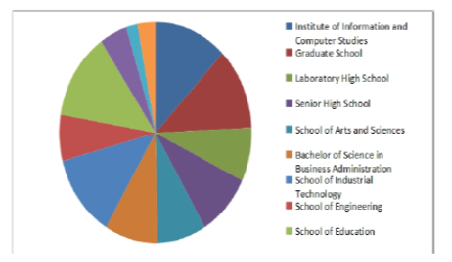


Indian Journal of Science and Technology
DOI: 10.17485/IJST/v15i26.1927
Year: 2022, Volume: 15, Issue: 26, Pages: 1315-1323
Original Article
April Rose A Zaragosa1*
1Faculty, Institute of Information and Computer Studies Northern, Iloilo Polytechnic State College Main Campus, Estancia, Iloilo, Philippines
*Corresponding Author
Email: [email protected]
Received Date:13 October 2021, Accepted Date:27 January 2022, Published Date:11 July 2022
Objectives: The study developed a Web-based Frontline Services and Laboratories Evaluation System for NIPSC to identify the needs and concerns of attending students in NIPSC by giving ratings and posting comments or suggestions in laboratories and frontline services. The main objectives of the research were to determine the level of usability of the developed features of a Webbased Frontline Services and Laboratories Evaluation system for NIPSC. Evaluate the system’s performance in terms of functionality, reliability, and efficiency of the information provided to clienteles. Methods: Descriptive and developmental research designs were employed in this study. It also helps the researcher analyze the information by the deployed standard survey questions to ensure the developed system meets its developed features and functions. The researcher used the Rapid Application Development (RAD) model as the software development life cycle for the software development activities. The researcher gets the total sampling size using sloven’s formula. Findings: The finding implied was very good in using the developed system to get feedback from the students. The developed system gives satisfaction to the users in which they can easily rate and give their comments and suggestions to the services and laboratories of the NIPSC. The administrator can easily gather feedback from the students in helping them to know what were the lacking needs of their services are. Using the developed system, it can continuously progress and outgrow the services of Northern Iloilo Polytechnic State College when it comes to evaluating the school’s frontline services and laboratories. The system’s overall performance in terms of functionality, reliability, and efficiency implied that using the developed system is very good in getting feedback from the students. Novelty: The developed system can evaluate the comments and suggestions of the students of NIPSC using their mobile phones and tablets. Be able to give results quickly, and it is user-friendly. It is very good if the school may continue to update the developed system, which may help to maximize its potential and improve its functionalities, reliability, and efficiency.
Keywords: Usability and Performance; Frontlines services and laboratories; Evaluation; Rating; Webbased; RAD Model
© 2022 Zaragosa. This is an open-access article distributed under the terms of the Creative Commons Attribution License, which permits unrestricted use, distribution, and reproduction in any medium, provided the original author and source are credited.
Published By Indian Society for Education and Environment (iSee)
Subscribe now for latest articles and news.